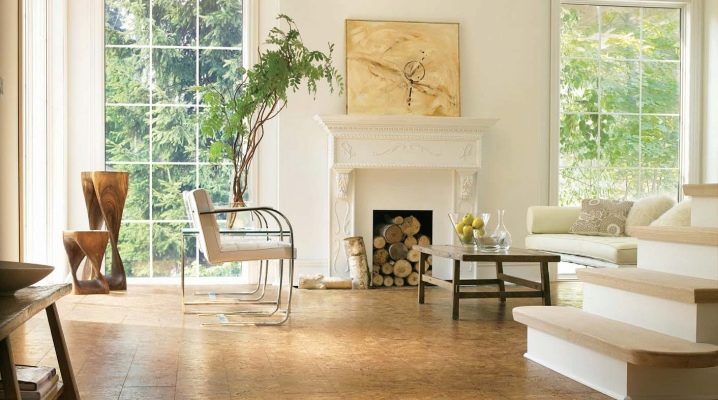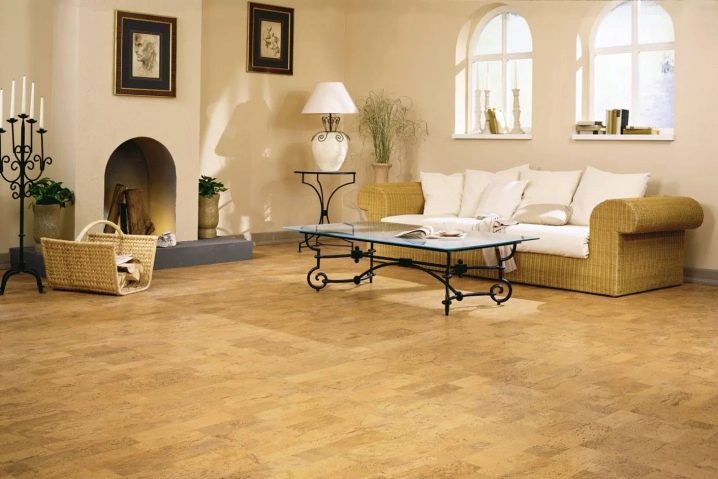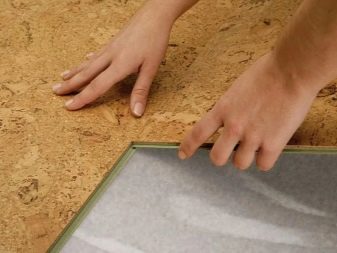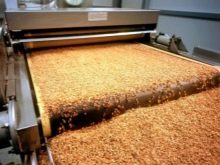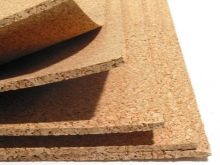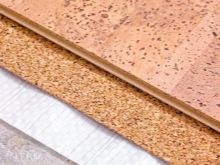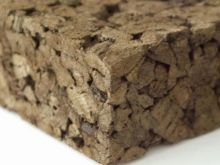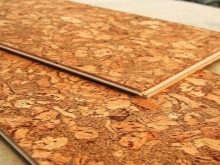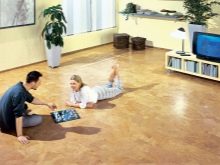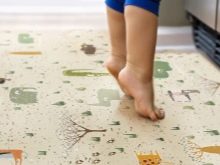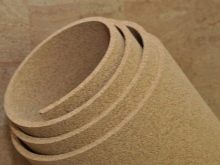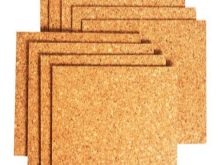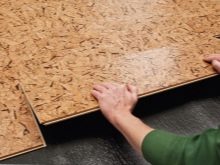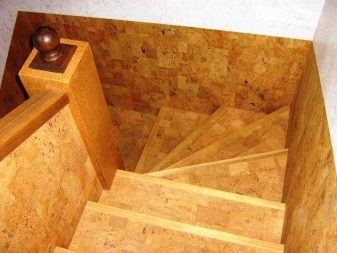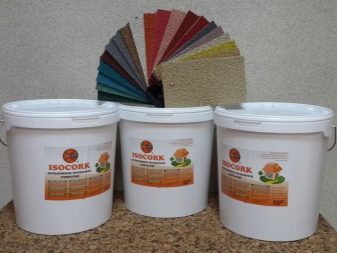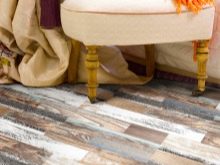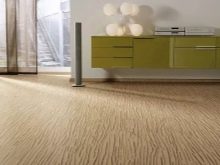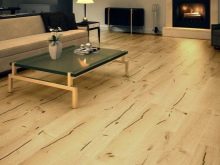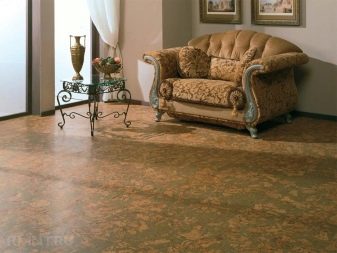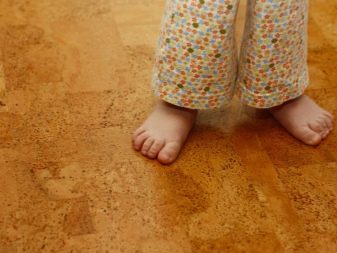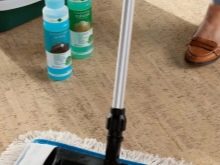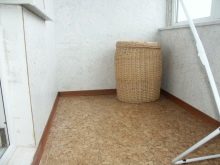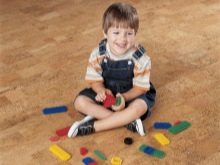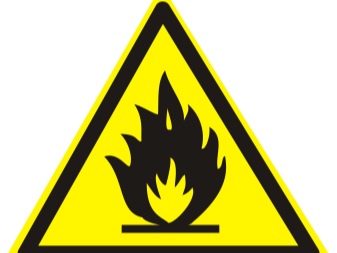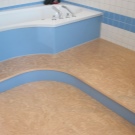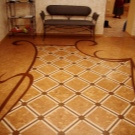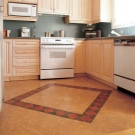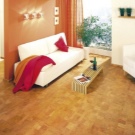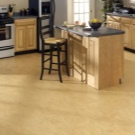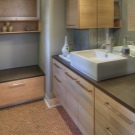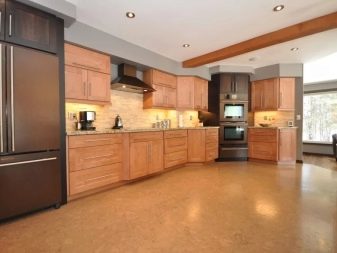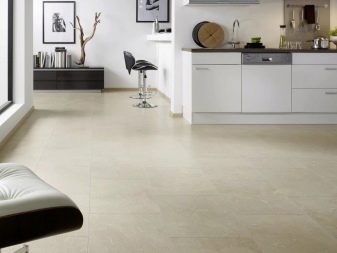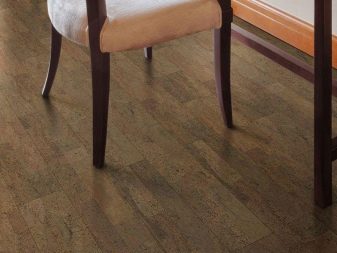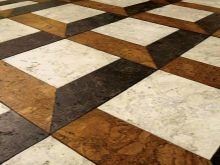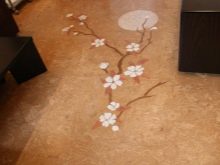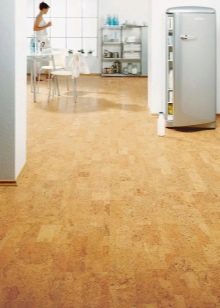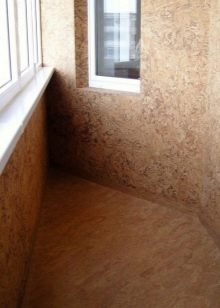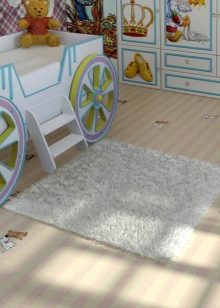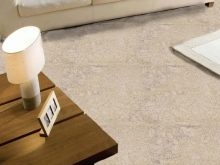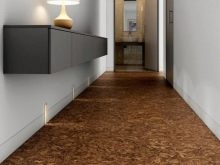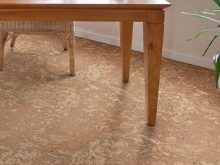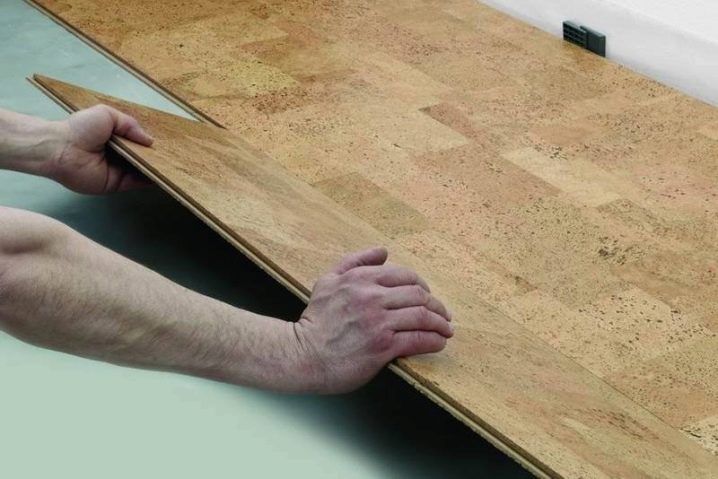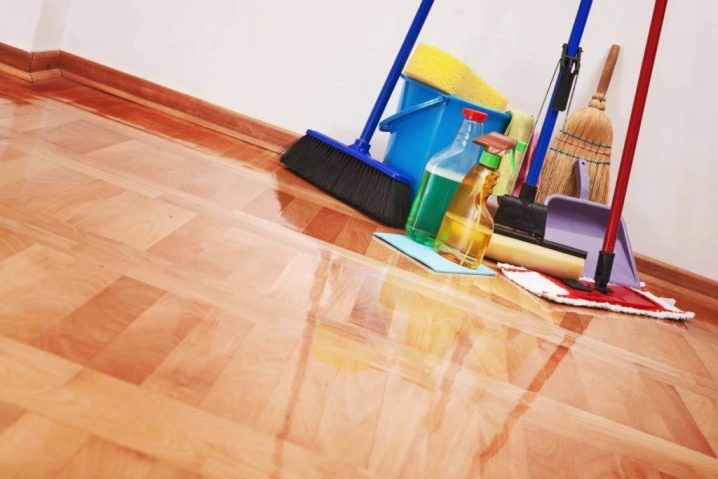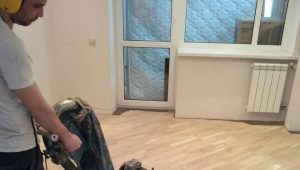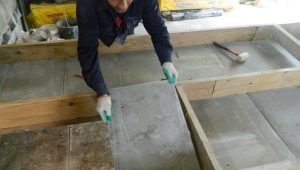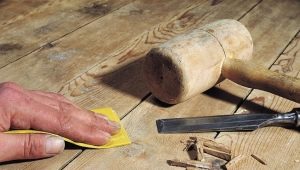Cork flooring: advantages and disadvantages
Cork - new flooring. To date, controversy has not subsided around the advantages and weaknesses of this material. He is exotic, expensive. Why is cork better than laminate? Is it possible to lay cork floors in the kitchen, bathroom? Let us analyze the situation from different angles.
What it is?
Cork flooring is an environmentally safe material for the production of which the top layer of cork oak is used. This is a unique natural raw material: cork oak groves are found only in Europe. Non-standard specificity has a method of removing the bark. The process requires only manual labor. They perform the task of master virtuoso: careful and directed actions are necessary to separate the top layer of the bark from its massif, which do not harm the tree itself.
Only 30-year-old oaks (not younger) are used as donor trees.If the upper layer is neatly cut using the technology, the bark continues to grow, after 6 years it will replenish its reserves for a new portion of the material. Natural harvest obtained from wood is processed into cork slabs. They are the basis for creating a new gender.
The ecological cleanliness of the plates is guaranteed by their production. The bark is crushed and passed for special treatment through heating on the furnaces. Then the resulting mass is pressed. Under the press, the particles of wood cork are connected, creating a unique texture that looks like honeycombs.
It is a fairly strong substance, saturated with air bubbles (suberin). To make the cork floor material more robust and practical, a second layer of suberin is being increased in production. Making cork flooring is an interesting design solution for decorating an apartment or house.
Natural cork has a beneficial effect on the musculoskeletal system of a person and his nervous system.
Coverage Features
Experts are talking about a number of features cork plates. Solid veneer is an expensive form of cork. More affordable cork agglomerate.This baby, pressed at high temperatures. Any small pieces of material fall into its composition. There is also a compromise option - a large veneer mixed with agglomerate. In terms of mechanical properties, the expensive and budget options are practically the same. Differences exist in appearance.
The highest characteristics are inherent in cork coatings of class 33. Their properties are in the presence of a different basis, but equally effective wear resistance. Hygiene and environmental friendliness of such material is guaranteed by manufacturers. Grade 33 cork laminate is considered the best. It is perfectly assembled, its composition has several layers: first, balancing, then shock-absorbing, moisture-resistant, and a natural cork layer 3 mm thick.
This is one hundred percent natural material, high-quality cork veneer, which plays a decorative and artistic role. The floor of the 33rd class cannot be harmed by the claws of pets, or by knives, or even axes. It is restored if, after moving the cabinet in the floor there are dents from the legs.
Doctors advise to sit on such a floor: how healing effect transmits natural coverage.
Kinds
The main types of cork flooring are as follows:
- Rolls of technical cork. In the market this material can be purchased by the meter. It is used mainly as a substrate for floor insulation.
- Cork tiles. Products are used for sticking when installing a floor covering. Glue sizes are different: square ones are 300x300 or 450x450 mm, rectangular tiles are designed in the parameters 600x300, 450x150 mm. When forming the floor, a variety of tile shapes provides the ability to lay out various patterns and ornaments.
- Parquet from cork. This flooring is sometimes called a floating floor. It has a MDF base on which a cork is glued. Its size is 900x185 mm, the plates look like laminate, but the texture of the material is completely different, natural. They are also fastened with the help of locks.
Cork finishing material is divided into several main groups: sprayed, tiled; liquid.
Tiled cork coating provides operation up to 40 years. It is resistant to aggressive substances, easily mounted. For laying offer a tile thickness of 6 mm, now manufacturers produce for sale and more thin (4 mm), but thin tile is much more difficult when you make the floor.It is better to impose on a board or sheets of wood.
Liquid coating - an innovation in the finish, which appeared on the market recently. It is easy to mount: the technology is similar to the usual coloring. In finished dry form, the liquid coating looks like a porous and at the same time dense surface. In the interior it is not much different with the tile, it looks elegant and prestigious. The sprayed coating is different from the liquid method of application. This work is done with a pistol or compressor; it is better to entrust it to professional craftsmen. Different companies also offer larger fragments for the production of works (cork panels), which allow you to quickly update a large area of the floor.
Advantages and disadvantages
Cork has a lot of undeniable advantages. Despite the fact that its price is higher than that of common laminate, This is a profitable and useful material:
- Cork is environmentally safe. Natural is the material itself, as well as the process of its receipt.
- The coating has high antistatic characteristics. The surface is not covered by dust, which is important for people prone to allergies.
- Cork does not emit toxic substances when heated.It does not form a fungus, so the floor of cork will be appropriate in the bathroom.
- Valuable quality - high sound insulation. Cork coverings suppress noise on the ceiling, walls and floor. If something falls on such a floor, the ringing and rumble is almost inaudible, so cork cladding is used in recording studios.
- Cork flooring has good heat conductivity. No one can deny themselves the pleasure of walking on such a floor barefoot. There is a feeling that a “warm floor” system is installed under the stopper. It seems that the elastic stopper is springy when walking, reducing the overall stress on the body.
- To install cork plates or a package, no special skills are required. This is a fairly simple and inexpensive procedure.
- Cork is easy to clean. You can do wet cleaning, vacuuming the surface.
- This is an extremely durable material that can last from 10 to 40 years. After assembly, the floor is ready for use.
- Cork coatings are not afraid of temperature changes, it is logical to lay them in country houses, balconies, verandas, in loggias.
- It has a high coefficient of friction, on this floor you can not slip.
Minuses
For the sake of justice, it is also necessary to voice shortcomings. The first is the high cost of the product. Even the adhesive cork coating is more expensive than the castle, not to mention the version of cork veneer. The cork is quite susceptible to water. In order to achieve good moisture resistance, it will be necessary to complicate and raise the cost of the process: install wax impregnation.
A fatal flaw is flammability. To mount the adhesive cork floor, like any cork coating, you need a perfectly flat surface. Cork is susceptible to direct sunlight. With a bright and constant stay in the sun, the coating and decorative patterns on it fade.
Solid and sharp components of garbage can be pressed into the cork.
In the overall picture of feedback from the owners of the floor, traffic jams dominate the positive. The owners of houses and cottages appreciated the ecological purity and beauty of natural material. They like the “silence” of the cork most of all, its cleanliness, warmth, that it is safe for children to play on such a floor. Fans cork cover claim: at the appropriate level of installation it is functional in the kitchen, bathroom.
Experts believe that you need to consider the country in which cork material “grew”. Preferences should be given to the European, Mediterranean, African type of raw materials. The best materials are considered. from Portugal, Spain, North Africa. Chinese cork oak has looser properties of wood. It is easy to fall for the tricks of advertising, which claims that the Chinese cork version is not inferior in quality to the European counterpart.
Colors
Anticipating the conversation about the colors of the cork coating, we note that in Russia there is still a somewhat derogatory attitude to the cork, although the trend is gradually changing, opinions are taking shape in favor of natural material. In the interior decoration of modest and presentable apartments, cork cover is 100% justified. Depending on the functional colors may be different.
In the kitchen, for example, a warm, natural yellowish color looks original. Brown cork floor or shade of ocher color harmonizes with the decor. If you have light furniture, you can lay a white cork. Cream, beige tones visually increase the space, emphasize the cleanliness of the room.
Keep in mind that the cork floor takes on additional color shades based on how it is lit, which panels or curtains are reflected in it, and how the floor is laid.
Manufacturers today are promoting a cork interspersed with textures that are interesting for design, using the most unusual shades. The top layer can be made in any color palette, it is suitable for exquisite design solutions. Modern technologies allow the use of photo printing in the design of plates and plates. So your photo shop and photo field will become spatial and bright.
The owners of squares with cork cover are still more attracted by stylization under the natural texture. They like cork imitating pine, oak, cherry, birch, alder. Proponents of the exotic allow themselves rare options: coloring for American walnut, rosewood. Depending on the selected shade of cork plates, the coating takes on the coloring of stone, sand, and pebbles.
How to choose?
When choosing pay attention to the country of origin. Having an alternative, for example, choosing between a Portuguese or Chinese cork, experts advise to give preference to the first, because it is more qualitative. Cork from Portugal is denser, it contains a higher percentage of suberin, does not carry risks that soon it will go through the gap. If this is an adhesive option, the qualities of varnish and glue, which are used to create the coating, are important here.
When buying a floating floor for the kitchen, it is important to consider what is your "weather" in the house. If there is more shade in the kitchen, pay attention to the moisture-resistant coating of the castle between the tiles. If the kitchen is sunny, make a decision on the tinted coating so that the cork does not lose color when exposed to direct sunlight. On the balcony is more practical to put a dark cork floor. Nursery, bedroom is better to decorate light.
Glue plates are approximately twice cheaper than lock analogs. When you buy glue and varnish on the glue option, you need to "throw" another third of the cost of the material. Mounting the adhesive floor is twice as expensive as floating. So in the total the difference will be insignificant. If we talk about design tiles, this is an expensive pleasure: 1 square meter. m. of the finished coating can cost several thousand rubles.
Good quality are considered to be tile manufacturers Wicanders, Corksribas, Baumtex, Ibercork.
Styling options
The main point in the installation of cork flooring technology is to lay the material on a good base. It may not contain any irregularities or cracks. Suitable concrete, wood and metal base. If you notice any flaws in it, begin to level the floor with special mixtures, decide to lay the sheets of plywood on top. Then proceed to gluing tiles.
Professionals make the following recommendations to the process:
- leave the cover for about a day “rest” in the room after the purchase, then proceed to the installation;
- well look at the packaging of rolls and bags with tiles, sort them so that everything matches by texture and color;
- the direction of tile laying is from the center to the walls of the room (it is more convenient to use the laying variant crosswise, which gives the effect of a full sheet);
- if you like the pattern, first work with it without the use of glue: adjust, form a tile;
- Apply the glue to the tile and base; before joining the surfaces, give it a few minutes to dry;
- freshly glued tiles can be slightly tapped with a hammer;
- With a damp cloth, immediately remove excess glue.
The process of laying the cork floor, see below.
Floating floor is performed according to the technology of locking joints, which are used to lay laminate. This is a common technology, any owner of the home, at least once to make repairs, fully owns it.
Care Tips
Cork floor does not require an individual approach. Neither dust, nor tobacco smells, nor other fumes the cork attracts. Therefore, a vacuum cleaner and a damp cloth for care will be quite enough. Now complete with cork coverings often offer care products with detailed instructions. The choice of these drugs is quite diverse.
Cleaning liquids should be used carefully. They should not be solvents. Aggressive chemistry threatens the color and texture of the cork. Varnish, glue, paint should be removed immediately after the installation of plates or plates with ordinary cotton cloth. Cork floors are gaining popularity in the decoration of modern homes. The consumer has the right to rely on a wide choice of products from a practical and beautiful imported natural material.
Once you decide to change the usual cork floor, you choose the ideal, durable option for your home.
